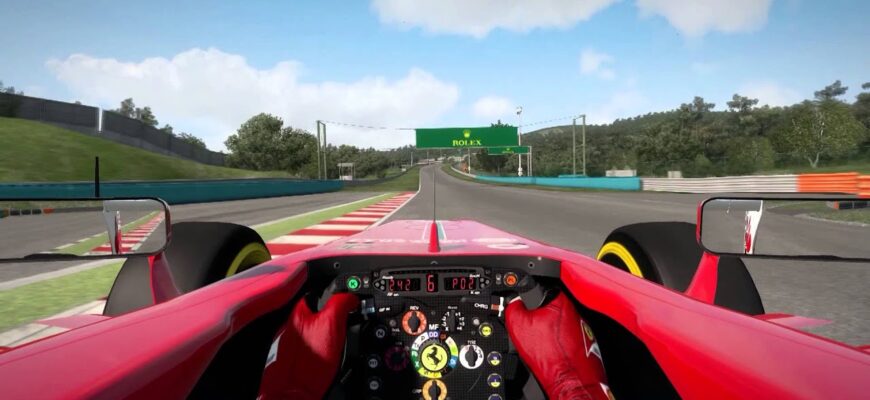The Hungarian Grand Prix, a circuit known for its tight turns and demanding strategy, often serves as a pivotal point in the Formula 1 season. For Ferrari and their star driver, Charles Leclerc, the 2025 edition promised so much, with Leclerc securing a coveted pole position. Yet, as the checkered flag waved, the elation had dissipated, replaced by a familiar sense of disappointment. Leclerc crossed the line in a distant fourth, his SF-25 car having transformed from a nimble contender into an almost unmanageable beast in the race`s crucial final stages. What exactly transpired in the heart of Hungary to derail what seemed like a certain podium, if not a victory?
The Tire Conundrum: A Question of Pressure
The immediate post-race analysis honed in on the tires, specifically the final set fitted to Leclerc`s car. Reports suggest that the tire pressures in this final stint were excessively high, pushing the Pirelli compounds well outside their optimal operating window. For those unfamiliar with the delicate art of F1 tire management, this is akin to trying to run a marathon in shoes inflated to bursting point – technically possible, but certainly not conducive to peak performance.
The prevailing theory behind this audacious, and ultimately detrimental, setup choice revolves around the ambient temperatures. With the Hungarian weather proving unseasonably cool, particularly during Saturday`s qualifying sessions, Ferrari`s strategists may have opted for higher baseline pressures. The goal? To accelerate the “warming up” process of the tires, enabling them to reach their ideal temperature range more quickly. This proactive measure, while logical in theory, appears to have backfired spectacularly. An indirect confirmation of this strategy might have been a radio message from Oscar Piastri`s race engineer, alerting him to Leclerc`s potentially slow tire warm-up after his second stop – an ironic warning given the subsequent outcome for Ferrari.
Adding insult to injury, the heat emanating from the brake drums could have further exacerbated the issue. This additional thermal load, combined with an already elevated inflation pressure, would have pushed the tires far beyond their operational limits, rendering the SF-25 inherently unstable and unresponsive. Leclerc`s lap times, a full second slower than his direct rivals like Piastri, painted a stark picture of the car`s deteriorated performance.
The Suspension Saga: A Deeper Design Flaw?
While the tire pressure theory holds considerable weight, another, more unsettling hypothesis has begun to circulate within the paddock. This alternative narrative suggests that the elevated tire pressures weren`t merely an optimistic attempt at rapid warm-up, but rather a defensive measure. The proposed reason? To mitigate excessive wear of the under-floor plank – a critical component that, if worn beyond regulatory limits, can lead to disqualification. This echoes the infamous incident in China where Leclerc faced disqualification due to excessive plank wear.
If this theory holds true, it represents a significant setback for Ferrari. The team had reportedly introduced a revised rear suspension at the Spa-Francorchamps circuit, with one of its primary objectives being to allow for extremely low ride heights without compromising plank legality. Should the Hungarian GP`s tire pressure choice have been a workaround for this very issue, it would implicitly admit a fundamental failure in a key aerodynamic modification. It would imply that the quest for performance, in this instance, inadvertently created a regulatory tightrope walk, necessitating a compromise that sacrificed race pace.
The Perfect Storm and Ferrari`s Perpetual Puzzle
The most reasonable conclusion, as suggested by many technical experts, is that Charles Leclerc`s Hungarian Grand Prix unraveling was not due to a single catastrophic error, but rather a “perfect storm.” A combination of a strategic, albeit flawed, decision to increase tire pressure for warming, compounded by the inherent heat transfer from the brake systems, pushed the tires into an unrecoverable state. Furthermore, the possibility that this tire pressure adjustment was also influenced by an underlying issue with the rear suspension`s ability to manage plank wear adds layers of complexity to Ferrari`s ongoing performance puzzle.
For a team with Ferrari`s legacy and resources, such persistent technical miscalculations are baffling. While moments of brilliance, like Leclerc`s pole position, offer glimpses of their potential, the recurring pattern of race-day performance drops raises fundamental questions about their operational consistency and strategic execution. The irony is not lost on the tifosi, who witness their beloved Scuderia repeatedly finding new ways to snatch defeat from the jaws of victory.
Looking Ahead: A Season of Introspection
The Hungarian GP serves as another poignant reminder that Formula 1 is a relentless crucible of engineering, strategy, and human performance. For Ferrari, it underscores the urgent need for a thorough introspection, moving beyond isolated incident analyses to address systemic vulnerabilities. As the season progresses, the focus will undoubtedly remain on Maranello, eager to see if they can finally untangle the complex web of technical challenges that have, for too long, hindered their championship aspirations.









